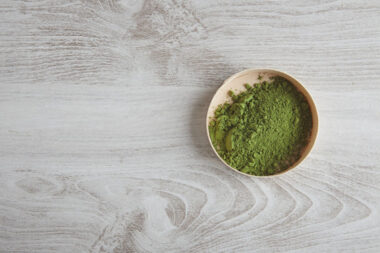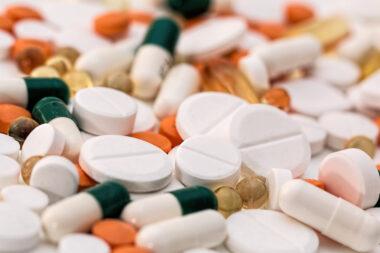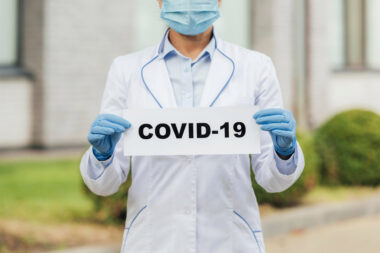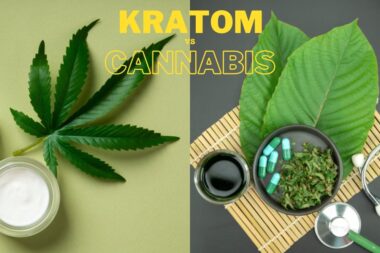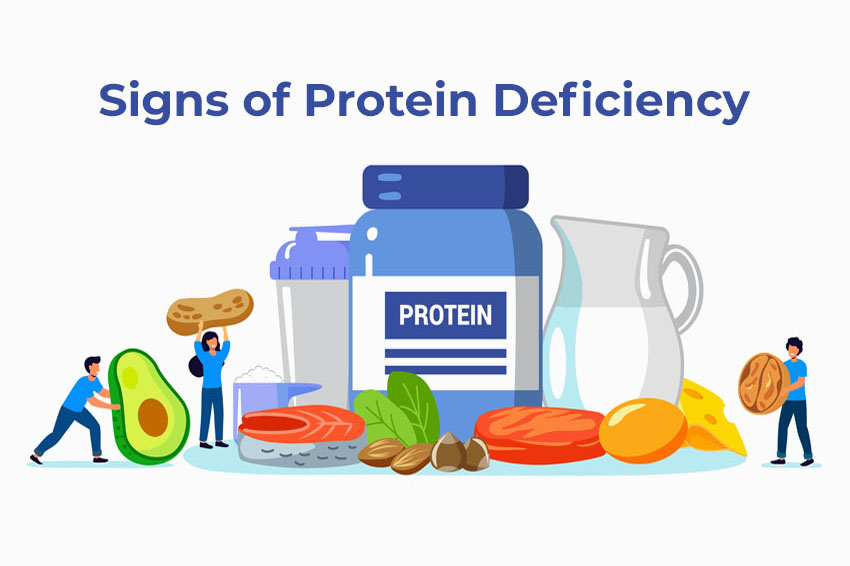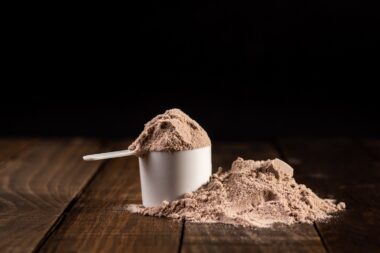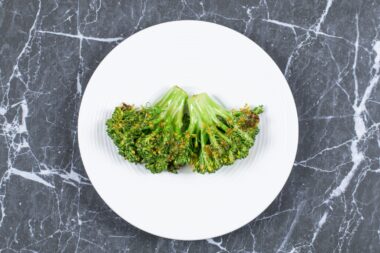Each cell in your body contains protein. To repair and replace cells in your body, you need protein in your diet. Protein is also necessary for children’s, adolescents’, and pregnant women’s growth and development.
It is vital to ingest enough protein throughout the day to strengthen immunity, regulate weight reduction, control blood pressure, and so on.
Here’s all you need to know about protein insufficiency symptoms and how you can add enough protein to your diet.
What are the signs of protein deficiency?
Protein deficiency is a condition when the amount of protein you consume falls short of meeting your body’s requirements.
While protein is a crucial component for your body, there’s a chance that maybe you are not getting an adequate amount of protein in your diet.
If you are deficient, your body may exhibit some indications and symptoms that should not be ignored, as they can lead to a variety of health problems and make them worse.
Here, I’ve compiled a list of symptoms that could indicate a protein deficiency in your body.
1. Slow healing of wounds
Protein is necessary for collagen formation that is needed to heal your wound. If you have a protein deficiency, your wound will take a longer time to heal.
2. Falling sick repeatedly and tiredness
Protein is a crucial immune booster since it stimulates the antibodies that fight illness. A protein deficiency can be the reason you easily catch a cold or other common viral flu. It also makes you feel constantly tired and less energetic.
3. Nails hair and skin
The first indication that you’re not giving your body ample protein includes major hair fall, split ends of hair, frail nails, and dry, undernourished skin.
Protein consists of amino acids that enhance the absorption of biotin, a vitamin that promotes healthy skin, nails, and hair. When you don’t eat enough protein, your biotin absorption suffers as well.
4. Swelling on hands and feet
In severe cases of protein deficiency, swelling of feet and hands can be seen. It is called “Edema”. Edema can occur due to many other reasons protein is solely not responsible for it.
5. Stunted growth in children
Protein deprivation in infants severely hampers structural activities—such as muscle growth, collagen formation, bone, and tooth formation.
6. Craving and Hunger
Carbohydrates take less time to digest than fat and protein and it makes you feel hungry frequently. Cravings are frequent when you don’t get enough protein. Since your body boosts your hunger to get what it needs.
Also read: Hormonal Imbalance in Females: Natural Ways to Balance It
7. Mood swings
Protein provides amino acids which affect your mood, so if you are having excessive mood swings lately this could be one of the indications of protein deficiency.
8. Muscle loss
If you don’t take the recommended amount, your body will begin to eat your muscle mass, resulting in the formation of extra fat pockets. As a result, the skin becomes flabby.
How much amount of Protein do we need daily?
The amount of protein a person needs can be varied. It is calculated based on body weight, muscular mass, physical activity, and age. Undoubtedly, bodyweight is the most important factor in protein requirements.
According to scientists, the recommended daily amount (RDA) for protein is 0.4 grams per pound of body weight (0.8 grams per kg) should be sufficient for most people.
For a 165-pound adult, this corresponds to 66 grams of protein per day (75 kg).
Easy options to increase protein intake in your diet
Protein foods are broken down into components known as amino acids during digestion. To stay healthy, the human body needs a variety of amino acids at sufficient levels.
We can easily get the required amount of protein from animal-based sources, plant-based sources, grains, and dry fruits as well.
To make it less hectic for you, I have compiled a list of food sources from which you can easily get a sufficient amount of protein and can add a variety to your diet.
Also read: 5 Best Vegan Protein Powder in India
1. Greek Yogurt
Greek yogurt, also known as strained yogurt, is a thick, protein-rich type of yogurt. It has a creamy texture and contains a variety of nutrients such as calcium, vitamin B12, vitamin A, selenium, and zinc.
Greek yogurt can be mixed into smoothies, soups, salad dressings, and baked goods, or it can be eaten on its own with some fruit and a sprinkle of crushed nuts for crunch.
2. Milk and Cheese
Milk and cheese are high in protein and calcium, and many are fortified with vitamin D. To keep your bones and teeth strong and help prevent osteoporosis (a medical condition in which the bones become brittle and fragile from loss of tissue).
3. Egg
Egg protein is exceptionally bioavailable, and both the white and yolk of an egg contribute to muscular growth and strength. Leucine, among the most important amino acids, is found in eggs.
4. Fish and Seafood
Fish is rich in protein and contains mostly no fat. Fish with higher fat, such as salmon and tuna, are also good options. These fish are high in omega-3 fatty acids, which are beneficial to your heart.
5. Red meat
Protein is plentiful in red meat. It has a heavy amount of iron, zinc, selenium, vitamins B12, and B6. Red meat can be part of a healthy diet, but it’s best to limit your consumption.
Consuming a lot of red meat has been linked to a higher risk of developing certain health problems.
6. Nuts
Nuts are high in protein and an excellent source of essential fatty acids (EFAs) such as omega-3 and omega-6, magnesium, and vitamin E.
Beans, Nuts, Cashews, and Walnuts are some of the examples. Nut oils and butter are other alternatives for people trying to increase their plant protein intake. Almonds, cashews, and peanut butter can also be added.
7. Beans
Half a cup of beans has the same amount of plant protein as an ounce of grilled steak. Additionally, these nutrient-rich chunks are low-cost and high in fiber, so you’ll be satisfied for hours.
8. Soy
Soybeans are high in protein and consist of all of the essential amino acids. They’re also high in plant fats, fiber, and a variety of vitamins. One cup (172 g) of boiled soybeans contains approximately 29 g of protein (5 g) dietician.
Soy protein has a high nutritional value, but it is not as high in quality as animal protein.
9. Seeds
Seeds such as pumpkin, chia, flax, and sunflower are great snacks to add protein to your daily diet.
Conclusion
Adding a variety of protein sources at each meal will help you receive adequate protein and nutrients. Some people require more protein than the average adult; consult a dietician if you’re unsure how much protein is right for you.
Image Credit: Romanty

Hazra is well-skilled health, wellness, and lifestyle writer. She can dive deep into one’s heart through her words bringing them close to oneself. And she is a firm believer and achiever who loves to explore new things. When not writing, Hazra enjoys exploring the outdoors and reading books. Catch her on LinkedIn.












